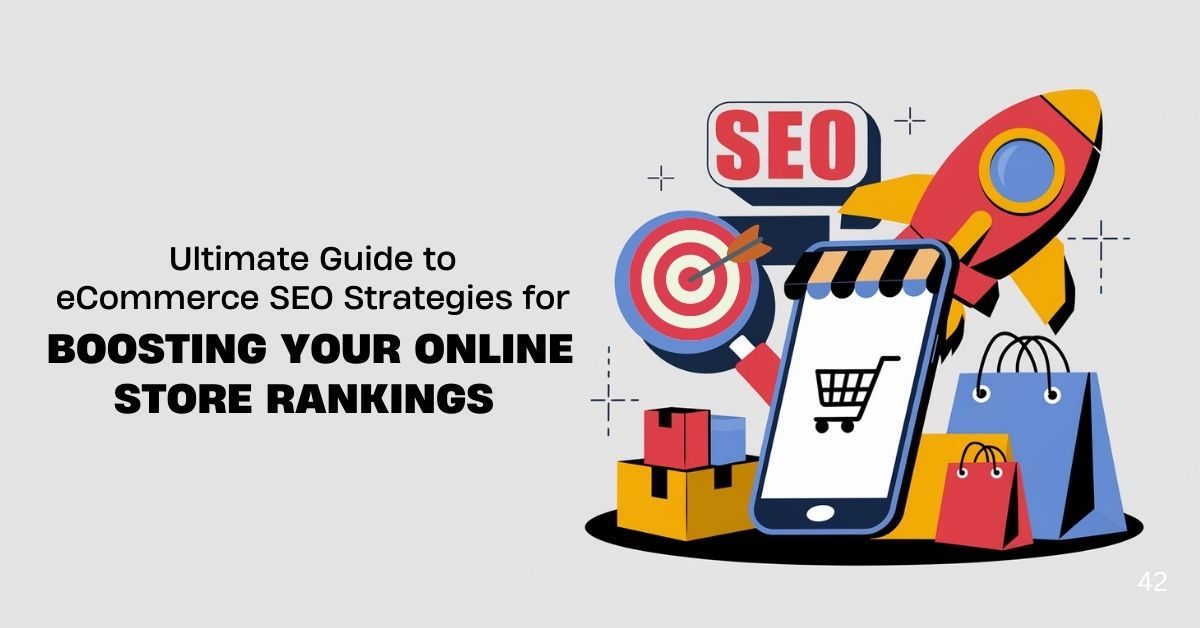# Ultimate Guide to eCommerce SEO Strategies for Boosting Your Online Store Rankings
The modern eCommerce landscape is fiercely competitive, making effective SEO strategies a cornerstone of success. With increasing keyword difficulty and substantial search volumes, understanding and implementing effective eCommerce SEO strategies is essential for enhancing visibility and driving sales. This guide will walk you through comprehensive eCommerce SEO strategies to help you improve your online store’s rankings and grow your business.
## Table of Contents
- Understanding eCommerce SEO
- Keyword Research and Optimization
- On-page SEO Strategies
- Technical SEO Tactics
- Off-page SEO Strategies
- Measuring Success and Analytics
- Conclusion
## Section 1: Understanding eCommerce SEO
### Subsection 1.1: What is eCommerce SEO?
What is eCommerce SEO?
eCommerce SEO refers to the process of optimizing an online store to improve its visibility in search engine results pages (SERPs). Unlike traditional SEO, eCommerce SEO focuses on product pages, category pages, and the unique challenges that come with large inventories, product variations, and dynamic content. The goal is not only to attract more traffic but to drive highly targeted traffic that results in conversions.
### Subsection 1.2: Importance of SEO for Online Stores
Importance of SEO for Online Stores
SEO plays a critical role in the success of online stores. Here are some benefits:
- Increased site visibility and reach
- Higher rankings in SERPs leading to more organic traffic
- Improved user experience and engagement
- Higher conversion rates through targeted traffic
- Long-term results and ROI compared to paid advertising
## Section 2: Keyword Research and Optimization
### Subsection 2.1: How to Find Relevant Keywords
How to Find Relevant Keywords
Effective keyword research is the foundation of any successful SEO strategy. To find relevant keywords for your eCommerce site, consider using the following tools:
- Google Keyword Planner: Provides search volumes and suggestions
- Ubersuggest: Offers keyword ideas and competition analysis
- SEMrush: In-depth keyword analytics and competitor insights
### Subsection 2.2: Incorporating Keywords into Your eCommerce Site
Incorporating Keywords into Your eCommerce Site
Once you have identified the relevant keywords, integrate them strategically throughout your website:
| Area | Best Practices |
|---|---|
| Product Titles | Include primary keywords naturally |
| Product Descriptions | Use keywords contextually within engaging content |
| Categories | Structure categories around popular search queries |
| Metadata | Optimize titles, descriptions, and tags with keywords |
## Section 3: On-page SEO Strategies
### Subsection 3.1: Optimizing Product Pages
Optimizing Product Pages
Product pages are the heart of your eCommerce business. To optimize them for SEO:
Ensure unique product descriptions: Avoid duplicate content by providing fresh, valuable information.
Use alt text for images: Describe your images with keywords for better search indexing.
Leverage customer reviews: Encourage reviews for rich content and increased engagement.
### Subsection 3.2: Improving Site Structure
Improving Site Structure
A well-structured site helps search engines understand your content and enhances user navigation. Consider these strategies:
- Implement internal linking: Guide users through related content.
- Use breadcrumbs: Provide a clear path of navigation on product pages.
- Adopt silo structures: Group related content to maintain hierarchy and relevance.
## Section 4: Technical SEO Tactics
### Subsection 4.1: Mobile Optimization
Mobile Optimization
In an era where mobile commerce is booming, optimizing for mobile devices is paramount:
Responsive Design: Use CSS media queries to ensure your design adapts to screens of all sizes. AMP: Accelerated Mobile Pages can improve loading times for mobile viewers.
### Subsection 4.2: Speed and Performance
Speed and Performance
Site speed is a critical ranking factor for search engines and impacts user satisfaction. Here are strategies to enhance performance:
- Enable compression: Use tools like Gzip to reduce file sizes.
- Leverage browser caching: Store cached versions of your pages for faster loading.
- Optimize images: Compress images without compromising quality.
## Section 5: Off-page SEO Strategies
### Subsection 5.1: Building Backlinks
Building Backlinks
Backlinks from authoritative sites can significantly boost your search rankings. Here are some approaches:
- Guest Blogging: Write articles for other blogs to link back to your store.
- Influencer Partnerships: Collaborate with influencers for wider reach and credibility.
- Public Relations: Engage with media outlets to gain quality backlinks.
### Subsection 5.2: Social Media and eCommerce
Social Media and eCommerce
Utilizing social media platforms enhances your store’s visibility and authority:
 Facebook: Share posts and engage with your audience.
Facebook: Share posts and engage with your audience.
 Twitter: Utilize hashtags and trends for wider reach.
Twitter: Utilize hashtags and trends for wider reach.
## Section 6: Measuring Success and Analytics
### Subsection 6.1: Tracking SEO Performance
Tracking SEO Performance
Monitoring the impact of your SEO efforts is vital. Recommended tools include:
- Google Analytics: Track website traffic and user behavior.
- Google Search Console: Monitor search performance and indexing status.
### Subsection 6.2: Adjusting Strategies Based on Data
Adjusting Strategies Based on Data
Continuous improvement should be data-driven:
Analyze Bounce Rates: Identify pages with high exits and improve content quality. Monitor Conversion Rates: Adjust CTAs and check-out processes if necessary.
## Conclusion
Embarking on a journey to improve your eCommerce SEO strategies is bound to pay off with increased visibility, traffic, and sales. As you implement the diverse array of techniques covered in this guide, remember to track your progress and remain adaptable to changes. Start applying these strategies today and enhance your online store’s dominance.
Subscribe now for regular updates and insights into the world of eCommerce SEO, or contact us for professional assistance tailored to your business needs.
## SEO Best Practices
The effective application of eCommerce SEO strategies encourages natural inclusion of your primary keyword at a density of about 1-2% throughout the article. Additionally, internal linking can guide readers to relevant blog posts, while employing LSI keywords improves content depth and enhances search engine understandability.
## Meta Description
Discover the ultimate guide to effective eCommerce SEO strategies and learn how to boost your online store’s rankings and sales. Enhance visibility, traffic, and conversions with comprehensive techniques. Start optimizing today!







